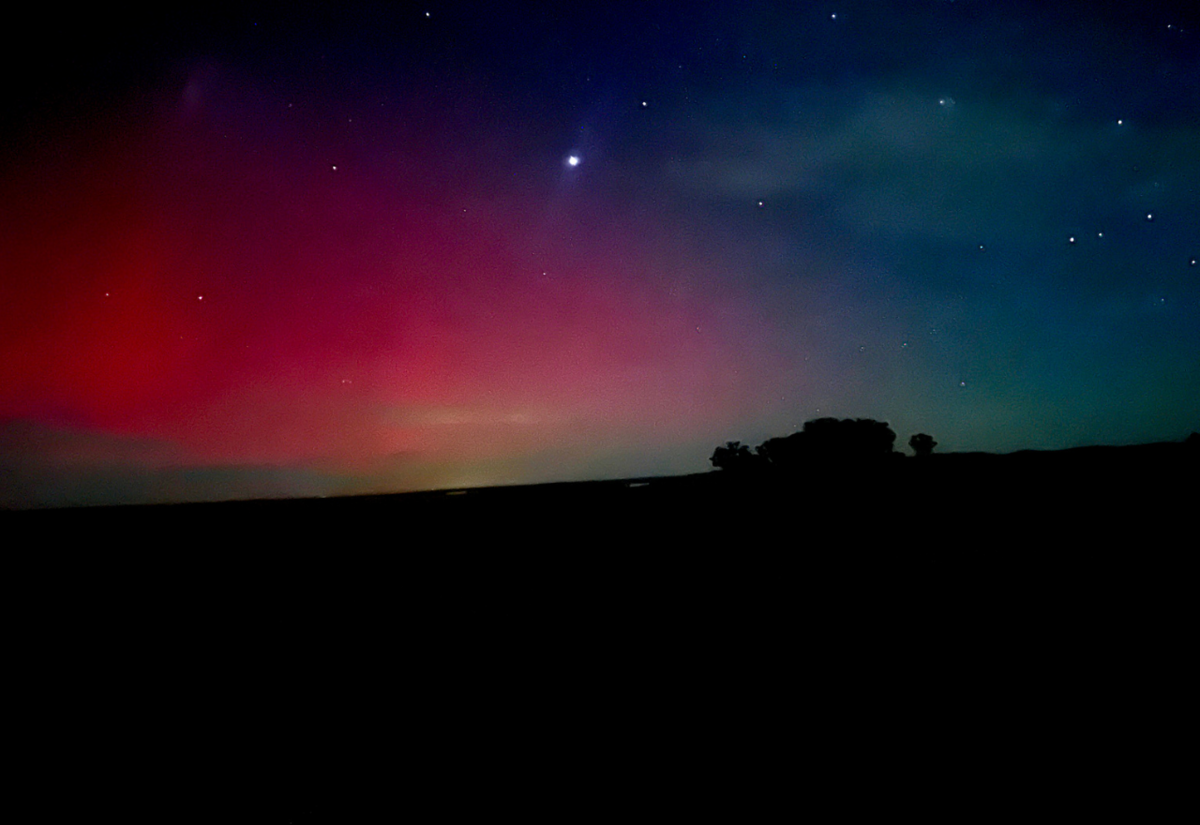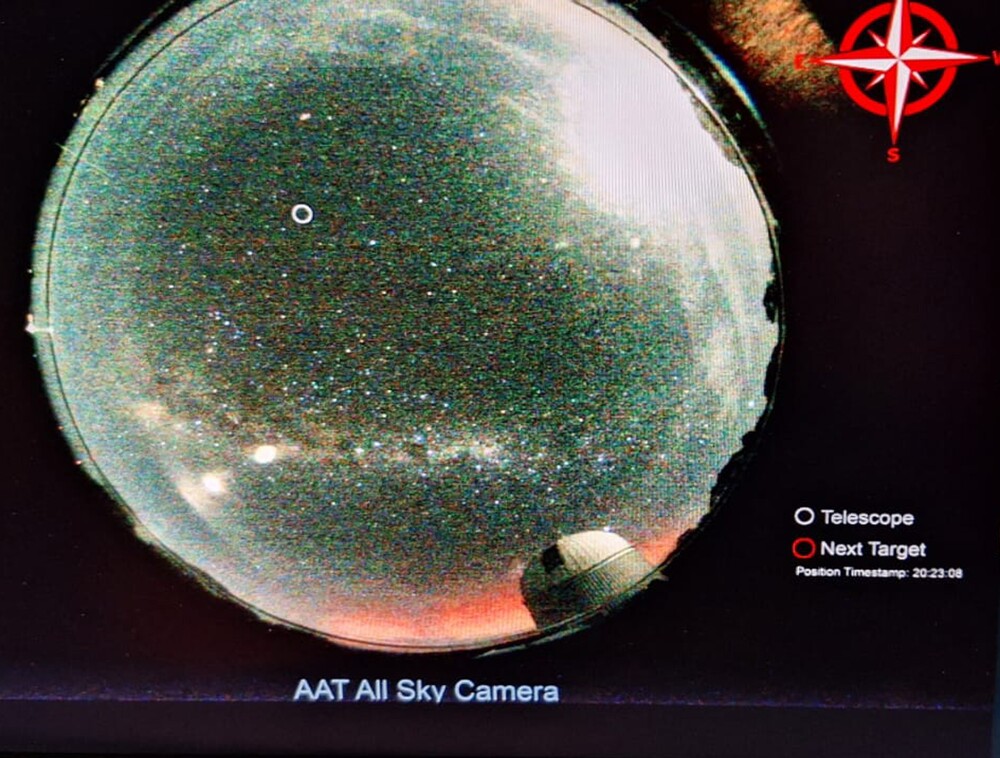Solar storm sparks celestial show
Liz Cutts
11 June 2025, 7:40 AM
 The Aurora Australis viewed from the Coonabarabran aerodrome [IMAGE: P. Duggan]
The Aurora Australis viewed from the Coonabarabran aerodrome [IMAGE: P. Duggan]A rare auroral event has thrilled seasoned astronomers and casual skywatchers.
In an extraordinary display of nature's grandeur, the night sky over the Warrumbungles and various regions across southern Australia was illuminated by the Aurora Australis on Sunday 1 June.
Usually confined to polar regions, the southern lights made a rare appearance in mid-latitude areas, reaching as far north as Tamworth in New South Wales with observers in the Warrumbungles treated to a vibrant aurora that was visible to the naked eye.
Local resident, Paula Duggan had her eyes on the skies prepared to capture images of the aurora.
“I headed up to Coonabarabran Aerodrome and took lots of photos of the sky at approximately 9pm on the Sunday night,” she said.
“You could see just a faint light on the horizon but no colours really; it just looked a bit like the start of daybreak.
“The photos were taken with an iphone on night mode and a long exposure and that is when the colour of the aurora really bounced out! I am so pleased to have captured the images as it probably was a once in a lifetime event.”
The unusual occurrence was the result of a severe geomagnetic storm, rated G4 by the Australian Space Weather Forecasting Centre, following a powerful M8.2 solar flare that erupted on 31 May.

Image of the aurora taken by the Siding Spring Observatory all-sky camera showing as a red glow in the south. [IMAGE: SSO]
Coonabarabran physicist, Andre Phillips says that a geomagnetic storm is caused when the Earth's ionosphere and magnetosphere is impacted by a large globule of ionised gas that has been recently ejected from the sun.
“Periodically the sun has surface eruptions that throw off large blobs of ionised gas into space,” he explained. “These blobs are known as Coronal Mass Ejections (CMEs) and when the Earth just happens to located in the direction that one of these blobs has been hurled, fireworks can occur in the Earth's upper atmosphere, particularly with increased auroral activity and aurora occurring away from the usual polar regions.
“At the latitude of Coonabarabran (~31° South) aurora are rare, but generally when they do occur, they are observed as a red glow on the southern horizon. Because of their low elevation in the sky, such aurora is best seen with a clear southern horizon, such as atop hills in the Warrumbungles.”
Disruption
Andre added that a powerful geomagnetic storm can potentially cause widespread disruption and damage to Earth’s technological infrastructure.
“Extreme geomagnetic storms can disrupt and damage Earth orbiting satellites, and may cause major damage to national power grids, such as the storm that occurred on the 13th March, 1989” he said. “This caused a major power outage in Quebec Canada, lasting days, and fried a satellite or two.
“There are satellites parked at locations around Earth's orbit which monitor the sun and can spot CME's heading toward the Earth.
"Although they can give warnings of a probable impact of a CME with the Earth, it's difficult to tell whether the CME will make a 'glancing blow' to the Earth, or a direct hit.
"If it's a big CME and a direct hit, then the effects can be very spectacular indeed.
“There was one such monster storm that occurred on the 28 September 1909, which had many of Coonabarabran's townsfolk staring at the sky in wonder with many terrified that it marked the end of the world!
"However, this type of activity is very rare.”
Astronomers anticipated that the auroral displays would persist into the Monday night and early Tuesday, offering continued opportunities for observation.
The Australian Space Weather Forecasting Centre extended its geomagnetic storm warning until 3 June maintaining a G4 rating due to the ongoing solar activity.
For those who missed the spectacle, experts advise keeping an eye on space weather forecasts, as heightened solar activity may offer more opportunities to witness the Aurora Australis again in the near future.



